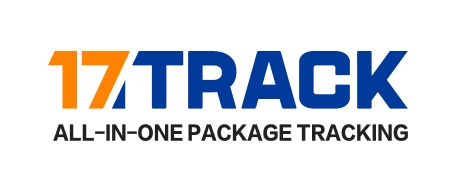The quality of services provided by international logistics in Australia indeed exhibits a diversified characteristic. The performance of services varies significantly among different enterprises, service models, and market demands. This can be analyzed from the following dimensions:
I. Service Efficiency: Time-effectiveness Stratification to Meet Different Demands
High-end Special Line: Time-effectiveness Priority
Take the Australia special line logistics as an example. For small packages under 20kg, it adopts the "Hong Kong direct flight + local delivery" model, achieving delivery within 6-10 days with a cost 40% lower than international express. A 3C accessory seller, after adopting this model, reduced the single-ticket logistics cost from 180 yuan to 95 yuan, increasing the gross profit margin by 12 percentage points. This type of service supports the transportation of sensitive goods such as electrical and liquid items, and provides DDP (Delivered Duty Paid) service to prevent customer rejections. It also offers real-time tracking and 24-hour response for abnormal packages.
Economic Plan: Cost Optimization
The sea transportation + truck delivery model transports goods to the Port of Melbourne by sea and then delivers them to the destination by truck, with a cost 60% lower than air transportation. A furniture seller, after adopting this model, reduced the single-cabinet freight from 120,000 yuan to 45,000 yuan. However, it is necessary to plan inventory 30 days in advance to avoid congestion during peak seasons and purchase cargo transportation insurance to cover sea transportation risks.
Express Service: Technology-driven
Australia Post has conducted drone delivery tests in Canberra and Logan City, and plans to cover 80% of urban areas in the future, achieving the ultimate goal of "30-minute delivery". Additionally, the Australian customs is piloting a "Single Window" platform, which, through API integration, automatically fills in declaration data, reducing the customs clearance time from 48 hours to 8 hours.
II. Service Security: Risk Management and Compliance Assurance
Goods Protection: Full-process Monitoring
Australian cross-border logistics strictly adheres to international standards and industry norms, using high-quality packaging materials and advanced loading technologies to ensure that goods are not damaged during transportation. At the same time, it provides comprehensive insurance services covering risks in transportation and warehousing. For example, a cross-border seller lost over 500,000 yuan due to not marking the product ingredient ratio, highlighting the importance of compliant declaration.
Customs Clearance Efficiency: Certification and Channel Optimization
Choosing a freight forwarder with AEO certification can increase customs clearance efficiency by 50%. At the same time, optimizing the replenishment cycle through Amazon's "Inventory Performance Index" and combining "first leg + warehousing" bundled pricing can reduce the overall cost. For instance, FBA sea transportation pre-stores goods in Amazon's Australian warehouses through bulk sea transportation, allowing sellers to enjoy Prime member 2-day delivery service. A home furnishing brand saw a 40% increase in repurchase rate after adopting this method.
Compliance Risk: Standards and Certification
The Australian customs has strict requirements for product labels and ingredient certifications. For example, food requires HACCP certification, cosmetics need to be labeled with AS/NZS 2604 standards, and children's toys must pass ACCC safety tests. Enterprises need to establish a GS1 standard product coding system to ensure that labels comply with ACL (Australian Competition and Consumer Commission) requirements and avoid goods being detained due to compliance issues.
III. Service Coverage: Coexistence of Network Breadth and Depth
Local Network: Coverage of Remote Areas
AUPost (Australian Post) as the official postal service, has a network covering the entire Australia, including remote rural areas. Its local transportation time is 1-5 working days, and it usually takes 1-3 days between major cities such as Sydney and Melbourne. However, the delivery cost in remote areas is three times that of cities. For example, the delivery cost from Perth to Kalgoorlie in Western Australia is as high as 80 Australian dollars per package, and an additional remote area surcharge is required.
International Network: Multi-mode Transportation
The eParcel international standard service delivery time varies by destination. For example, it takes 11 working days to the UK, 7 working days to New Zealand, and 13 working days to the US; the international express service is faster, taking only 6 working days to the UK and the US, and 2 working days to New Zealand. In addition, the overseas warehouse dropshipping model has set up warehouses in Sydney and Melbourne, achieving "local shipping + same-day delivery". A fitness equipment brand has reduced the delivery time of 20kg dumbbells from 35 days to 3 days through this model, and increased the average transaction value by 30%.
Value-added services: Full-chain support
Leading enterprises provide one-stop services including warehousing, customs declaration, and customs clearance, and have deep cooperation with local couriers such as Australia Post and StarTrack. For example, overseas warehouses offer value-added services such as return and exchange processing and product quality inspection. They also introduce a "carbon footprint tracking" service, allowing sellers to view the carbon emission data of each shipment and achieve "zero-carbon delivery" by purchasing carbon credits.
IV. Service Challenges: Balancing Cost and Efficiency
Cost pressure: High air and sea freight costs
Logistics costs in Australia are relatively high, especially for air and sea freight, which increases the operating costs of enterprises. The shortage of skilled workers also affects service efficiency and quality. Some enterprises have alleviated the pressure on human resources through automation technology.
Market fluctuations: Matching demand and supply
The rise of e-commerce has led to an increase in parcel volume and a decrease in traditional letter volume. Logistics enterprises need to adjust their business structure to adapt to market changes. For example, a cross-border seller faced the risk of warehouse overflow during the peak season due to insufficient inventory planning, resulting in delayed delivery.
Policy differences: Complexity and time-consuming of customs clearance
There are differences in trade regulations, standards, and procedures between Australia and other countries, which may lead to complex and time-consuming customs clearance processes. Enterprises need to closely monitor policy changes, such as the pilot "Single Window" platform by the Australian customs to simplify the customs clearance process.


